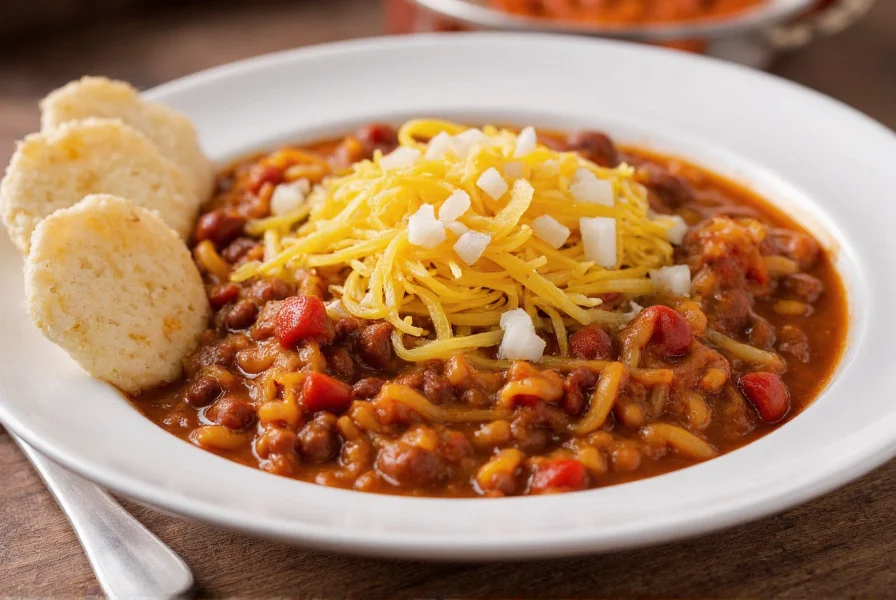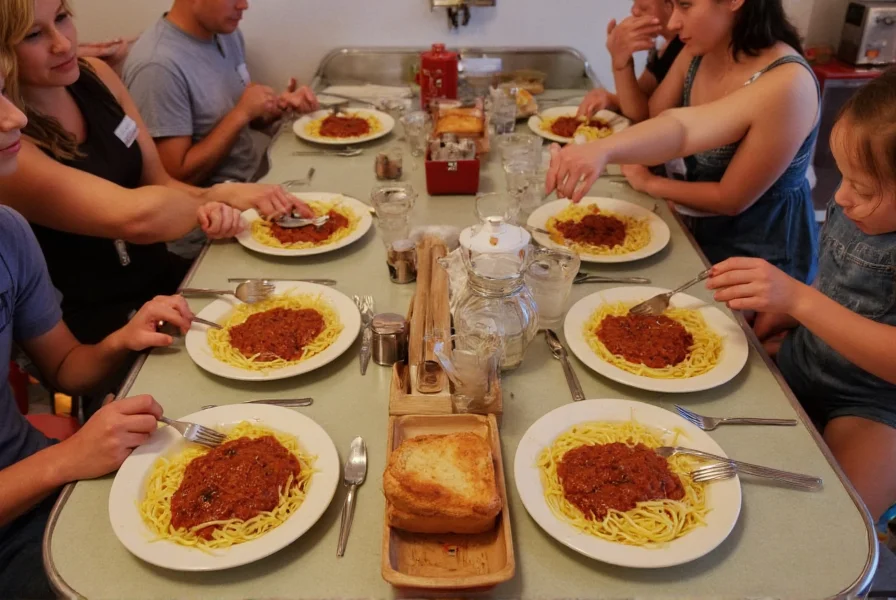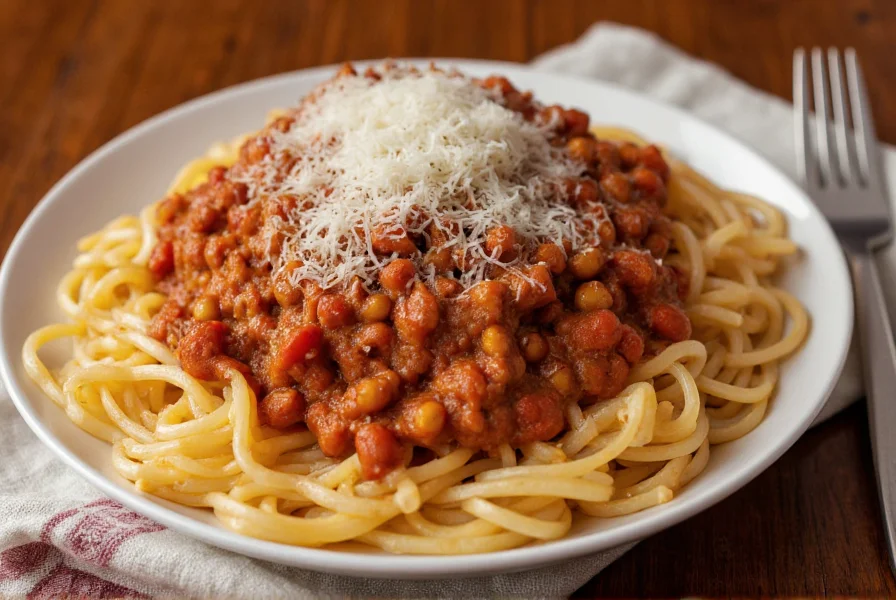Cincinnati chili spaghetti represents one of America's most distinctive regional food traditions. This iconic dish isn't spaghetti with conventional chili—it's a culinary innovation developed by Greek and Macedonian immigrants in the 1920s that has become synonymous with Cincinnati's food identity. The dish centers around a finely ground meat sauce simmered with unexpected spices that create a complex flavor profile unlike any other chili in the United States.
The Origins of Cincinnati-Style Chili
Contrary to what the name suggests, Cincinnati chili has little connection to Mexican or Texan chili traditions. Greek immigrant Tom Kiradjieff created the first version at his restaurant Empress in 1922, adapting Mediterranean meat sauce recipes to American tastes. The distinctive spice blend reportedly came from experimenting with flavors familiar to Mediterranean palates while using ingredients available in Cincinnati. By the 1940s, Skyline Chili and Gold Star Chili had popularized the dish throughout the region, establishing the 'way' serving system that remains standard today.
What Makes Cincinnati Chili Unique
The secret to authentic Cincinnati chili spaghetti lies in its unexpected ingredients and preparation method:
| Component | Traditional Ingredients | Non-Traditional Elements |
|---|---|---|
| Meat Base | Ground beef (sometimes lamb) | Fine texture, almost paste-like |
| Spice Profile | Chili powder, cumin | Cinnamon, allspice, cocoa, Worcestershire |
| Serving Style | Over spaghetti | With shredded cheddar cheese melting into sauce |
| Accompaniments | Onions, beans | Sweet oyster crackers, not tortilla chips |
The sauce achieves its distinctive flavor through a slow simmering process that allows the unusual spice combination to meld. Unlike chunky Texas-style chili, Cincinnati chili has a smooth, almost gravy-like consistency that coats spaghetti perfectly. The addition of chocolate and warm spices creates a subtle sweetness that balances the heat—a technique reminiscent of mole sauces but developed independently in Cincinnati's immigrant communities.

The 'Way' System Explained
Cincinnati chili spaghetti is ordered using a numerical 'way' system that indicates how the dish is prepared:
- 2-way: Spaghetti topped with chili
- 3-way: Spaghetti with chili and shredded cheddar cheese
- 4-way: 3-way plus either onions or beans
- 5-way: 3-way plus both onions and beans
- Sinclair: A hot dog topped with chili and mustard (named after a local gas station chain)
This standardized ordering system developed as chili parlors competed for customers, creating a shared language that all Cincinnati residents understand. The cheese component is essential—it's not merely a topping but melts into the hot chili to create a creamy texture that defines the dish.
How to Make Authentic Cincinnati Chili at Home
While Cincinnati natives might debate the 'correct' recipe, authentic cincinnati chili spaghetti recipe fundamentals include:
- Brown 1 pound of extra-lean ground beef with diced onions
- Add 2 cups of water, 1 cup tomato sauce, and 2 tablespoons of vinegar
- Stir in signature spices: 1 teaspoon each of cinnamon, allspice, and cocoa powder
- Simmer covered for 2-3 hours until flavors meld and texture becomes smooth
- Serve over cooked spaghetti with generous shredded cheddar cheese
The extended simmering time is crucial—it transforms the sauce from a collection of separate flavors into a unified, complex profile. Many Cincinnati families guard their specific spice ratios as closely as Italian families protect their tomato sauce recipes.
Cultural Significance in Cincinnati
Cincinnati chili spaghetti isn't just food—it's cultural identity. With more chili parlors per capita than any other American city, Cincinnati residents consume enough chili annually to fill an Olympic-sized swimming pool. The dish appears at community events, school fundraisers, and family gatherings. Local sports teams like the Cincinnati Bengals and Reds have chili-themed promotions, and the annual Skyline Chili Taste of Cincinnati festival draws thousands.
What makes cincinnati style spaghetti particularly interesting is how it represents American immigrant adaptation. Greek and Macedonian immigrants transformed their traditional meat sauces using New World ingredients while incorporating flavors familiar to their Mediterranean palates. The result was something entirely new that became deeply embedded in Cincinnati's cultural fabric.
Common Misconceptions About Cincinnati Chili
Several myths persist about this regional specialty:
- Myth: It contains chocolate as a primary ingredient
Reality: Most recipes use just 1-2 teaspoons of unsweetened cocoa powder for depth - Myth: It's extremely spicy
Reality: Heat level is mild; the focus is on complex spices rather than burn - Myth: It includes beans as standard
Reality: Beans are optional (in 4-way or 5-way), not part of the base recipe - Myth: It's similar to Texas or New Mexico chili
Reality: Cincinnati chili shares almost no similarities with Southwestern chili traditions

Where to Experience Authentic Cincinnati Chili Spaghetti
While you can make cincinnati chili spaghetti recipe at home, nothing compares to experiencing it in its birthplace. Cincinnati boasts over 200 chili parlors, with Skyline Chili and Gold Star being the most famous chains. Each has subtle differences in their spice blends and cheese choices that spark friendly local debates. For a truly authentic experience, visit a neighborhood parlor like Dixie Chili or Camp Washington Chili, where the preparation methods have changed little since the 1940s.
Outside Cincinnati, regional chains like LaRosa's Pizza (which started as a pizzeria but added chili spaghetti) have expanded the dish's reach, though purists argue nothing matches the original. Some Midwest grocery stores now sell canned Cincinnati-style chili, but the fresh, made-daily versions at local parlors remain the gold standard.
Frequently Asked Questions
What's the difference between Cincinnati chili and regular chili?
Cincinnati chili differs significantly from regular chili. It's a thin, finely ground meat sauce with Mediterranean spices (cinnamon, allspice, cocoa), served over spaghetti with cheese. Regular chili is chunkier, spicier, typically served alone or with beans, and lacks the sweet-spice profile of Cincinnati style.
Why is cheese essential in Cincinnati chili spaghetti?
Shredded cheddar cheese is fundamental to authentic Cincinnati chili spaghetti because it melts into the hot chili, creating a creamy texture and balancing the spices. The cheese isn't just a topping—it's integral to the dish's flavor profile and texture, distinguishing it from other chili preparations.
Does Cincinnati chili actually contain chocolate?
Authentic Cincinnati chili recipes typically include unsweetened cocoa powder (1-2 teaspoons per pound of meat), not actual chocolate. The cocoa adds depth and complexity to the spice profile without making the dish sweet. This ingredient contributes to the distinctive flavor but doesn't make the chili taste like chocolate.
Can you make Cincinnati chili spaghetti vegetarian?
Yes, vegetarian versions of Cincinnati 5 way chili spaghetti exist. Many restaurants offer meat substitutes using textured vegetable protein or lentils, while maintaining the signature spice blend. The key is preserving the complex spice profile rather than the meat itself, as the spices define Cincinnati chili's unique character.
Why is it called 'chili' if it's so different from traditional chili?
The term 'chili' was likely used for marketing purposes when Greek and Macedonian immigrants introduced the dish in the 1920s. Calling it 'chili' made the unfamiliar Mediterranean-inspired meat sauce more approachable to American customers who recognized 'chili' as a familiar concept, even though Cincinnati chili shares few characteristics with traditional chili con carne.











 浙公网安备
33010002000092号
浙公网安备
33010002000092号 浙B2-20120091-4
浙B2-20120091-4